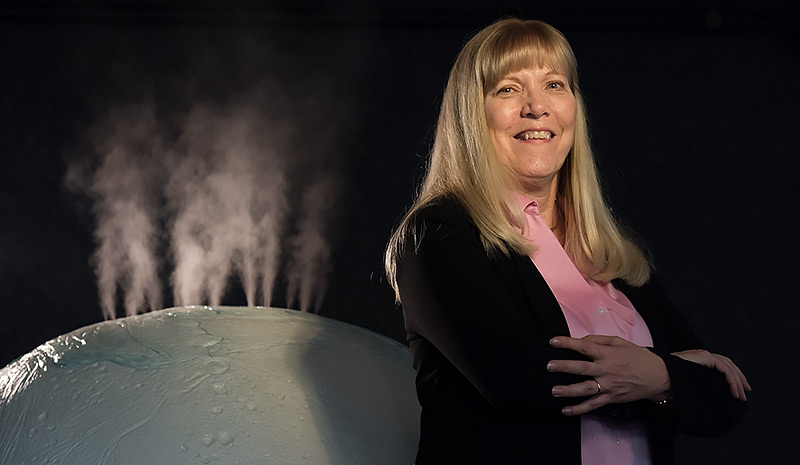
In the third grade, Linda Spilker got her first telescope for Christmas. Looking up at the stars and planets captivated her. Her love of astronomy continued at Cal State Fullerton, and she set her sights on exploring space and following her passion for the stars.
The 1977 physics alumna landed her first mission at NASA’s Jet Propulsion Laboratory, a division of Caltech, in Pasadena. She worked on the Voyager project that visited Saturn, Jupiter, Uranus and Neptune. For the last three decades, NASA’s Cassini mission, the unmanned spacecraft that has made remarkable discoveries about Saturn, and its moons and rings, has been her cosmic glory.
The 20-year Cassini mission ended Sept. 15, 2017, yet scientists will pore over the rich collection of scientific data for decades to come, says Spilker, Cassini’s project scientist. An expert on planetary ring systems who holds a doctorate in geophysics and space physics, she shares her out-of-this-world experiences and 40-year stellar career as a planetary scientist and space explorer.
What did the Cassini mission mean to you?
I started working on Cassini in 1988, and worked with teams of international scientists. We were like a close family. It was bittersweet to see the mission end. We learned so much, such as how Saturn’s moons, Titan and Enceladus, have liquid water oceans underneath icy crusts. Could these be earthlike worlds that support life? Part of me says we’ve got to go back, so I am on the science team for a proposed NASA mission called Enceladus Life Finder.
Is there alien life out there?
Oh absolutely! It’s so important that we keep exploring to better understand our solar system. There are still so many planets, so many questions — and so many possibilities. I do think there’s life out there. Perhaps an alien race might find us!
How did your undergraduate experience help launch your career?
Mark Shapiro (professor emeritus of physics) noticed my interest in astronomy and asked me if I ever considered studying physics. I thought, what the heck, and gave it a try. Dotty (Dorothy) Woolum (professor emeritus of physics) was a tremendous role model and took me under her wing. She gave me the opportunity to work on her meteorite research. I got a really good start at Cal State Fullerton. I came away with a good understanding of the fundamentals, which prepared me to do important science on the Voyager mission.
Do you have any advice for future space explorers?
Find something you love, that you are passionate about, then follow that dream and get the education you need to make that dream happen. I encourage women to listen to themselves. If I had listened to those who tried to discourage my interests in math and science, I wouldn’t be a part of NASA’s flagship missions and working with incredible scientists.
How do you hope your work is making a difference?
I want people to look up at the stars and planets, to see the beauty and the wonder of what’s out there, and ask the intriguing question: ‘Are we alone in the universe?’